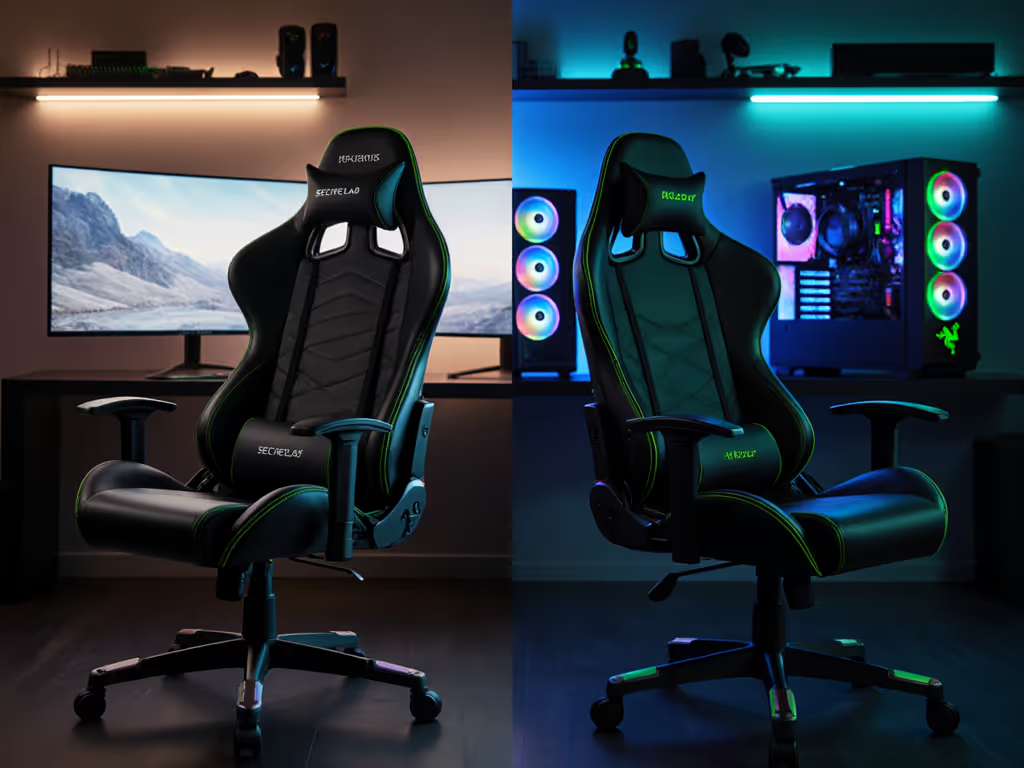
Gaming Chair Foam Density Explained: ILD and Durability
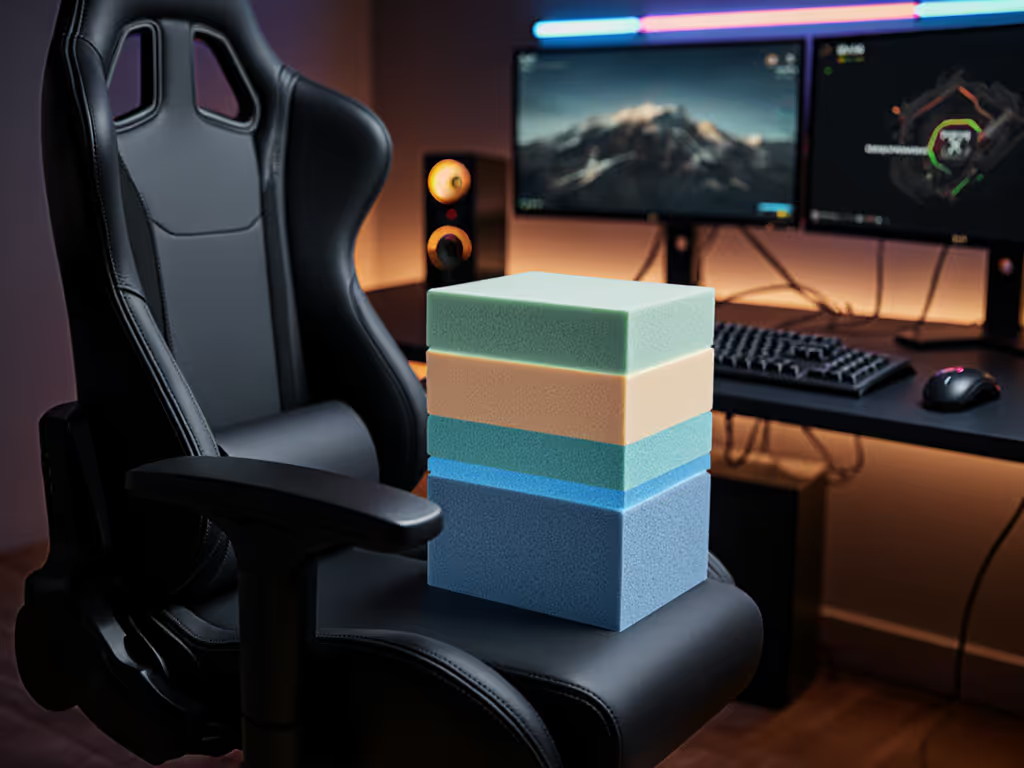
Understanding foam density and Indentation Load Deflection (ILD) is critical when selecting a gaming chair that maintains structural integrity through extended sessions. High-density foam forms the foundation of durable chair construction, measured in pounds per cubic foot (LB/PCF), with higher values indicating greater longevity. Meanwhile, ILD quantifies firmness through the pounds of force required to compress foam by 25% of its thickness. These metrics independently determine whether a chair will retain supportive properties through years of intensive use.
What Defines Foam Density in Gaming Chairs?
Foam density measures material compactness within a cubic foot. For gaming chairs:
- 1.0-1.8LB PCF: Budget-tier foam; compresses significantly within 1-2 years under daily use
- 1.8-2.5LB PCF: Mid-range durability; suitable for moderate usage (3-4 year lifespan)
- >2.5LB PCF: Premium tier; withstands daily 8+ hour sessions for 5+ years before compression occurs
Higher-density foam contains less air and more polymer material, directly correlating with resilience against permanent indentation. Unlike upholstery or frame components, foam degradation directly impacts spinal alignment, a critical factor for gamers experiencing 4+ hour sessions.
How Is ILD Measured and Why Does It Matter?
Indentation Load Deflection (ILD) quantifies foam firmness through standardized ASTM D3574 testing:
- A 15 x 15 x 4 inches foam sample undergoes compression
- A 50 sq inch indenter applies force until 25% deflection (1 inch for a 4 inch sample)
- Recorded pounds of force establish the ILD rating
| ILD Rating | Firmness Level | User Weight Recommendation |
|---|---|---|
| 16-26 | Ultra-Soft | Under 130 lb |
| 26-34 | Medium | 130-210 lb |
| 35-45 | Firm | 210-300 lb |
| 45+ | Extra-Firm | 300+ lb |
Note that perceived firmness varies by body weight: a 36 ILD foam feels medium-firm to a 180 lb user, but ultra-firm to someone weighing 120 lb. If you’re larger-framed or over 6'2", our big and tall chair fit guide explains seat dimensions and support levels that pair well with higher ILD. Manufacturers often pair high-density foam (>2.5LB) with medium-firm ILD ratings (30-40) for an optimal support-to-comfort balance.
Why Do Density and ILD Determine Long-Term Performance?
Foam degradation manifests in two critical ways:
- Structural collapse: Low-density foam (<1.8LB) loses over 30% thickness within 6 months of daily use, causing misaligned posture and lumbar strain
- Support erosion: Low-ILD foam softens unpredictably, creating uneven pressure distribution behind thighs and lower back (common hotspots mapped during 3-hour gaming sessions)
Premium gaming chairs like the Secretlab Titan Evo (2.8LB density) combine cold-cure foam with targeted ILD zoning, firmer under thighs (40+ ILD) and softer at lumbar (30-35 ILD), to distribute weight evenly while resisting deformation. This engineering prevents the "sinking" effect reported in budget chairs after 90 days of use. For a deeper look at trade-offs between materials and adjustability, see our budget vs premium comparison.
How Should Gamers Evaluate Chair Specifications?
Follow this protocol when comparing chairs:
- Verify density: Prioritize models advertising ≥2.5LB foam density explicitly (not "high density" without metrics)
- Cross-reference ILD: Match to your weight using the table above, heavier users require higher ILD
- Check warranty: Manufacturers confident in foam durability offer ≥3-year coverage on seat cushions
- Test recovery: Press fingers deeply into display samples; high-quality foam rebounds completely within 5 seconds
High-resiliency foam maintains 95% original height after 50,000 compression cycles, equivalent to 5 years of 8-hour daily use. To keep cushions performing longer, follow our gaming chair care guide for cleaning and maintenance. Pressure maps don't lie; they reveal how inferior foam shifts support away from critical areas within 90 minutes of sitting.
For extended gaming marathons, prioritize quantifiable metrics over marketing claims. Investing in validated foam specifications prevents premature chair retirement and aligns with ergonomic best practices for posture preservation. Once you’ve picked the right foam profile, optimize your setup with our gaming posture adjustment guide.
Related Articles

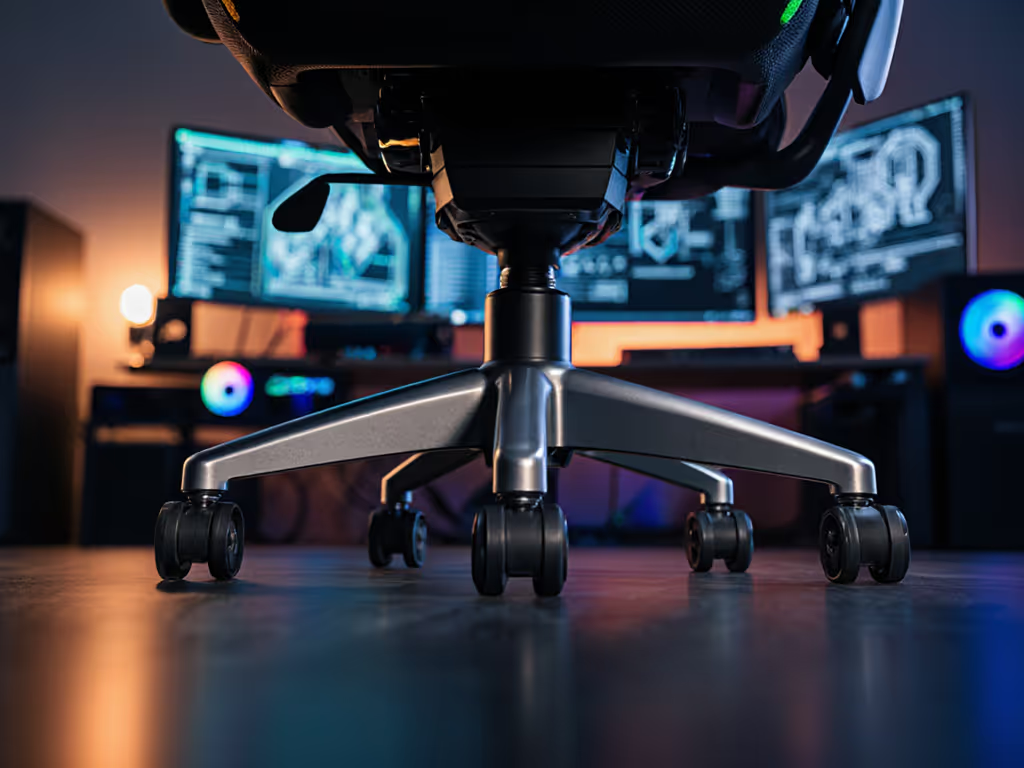
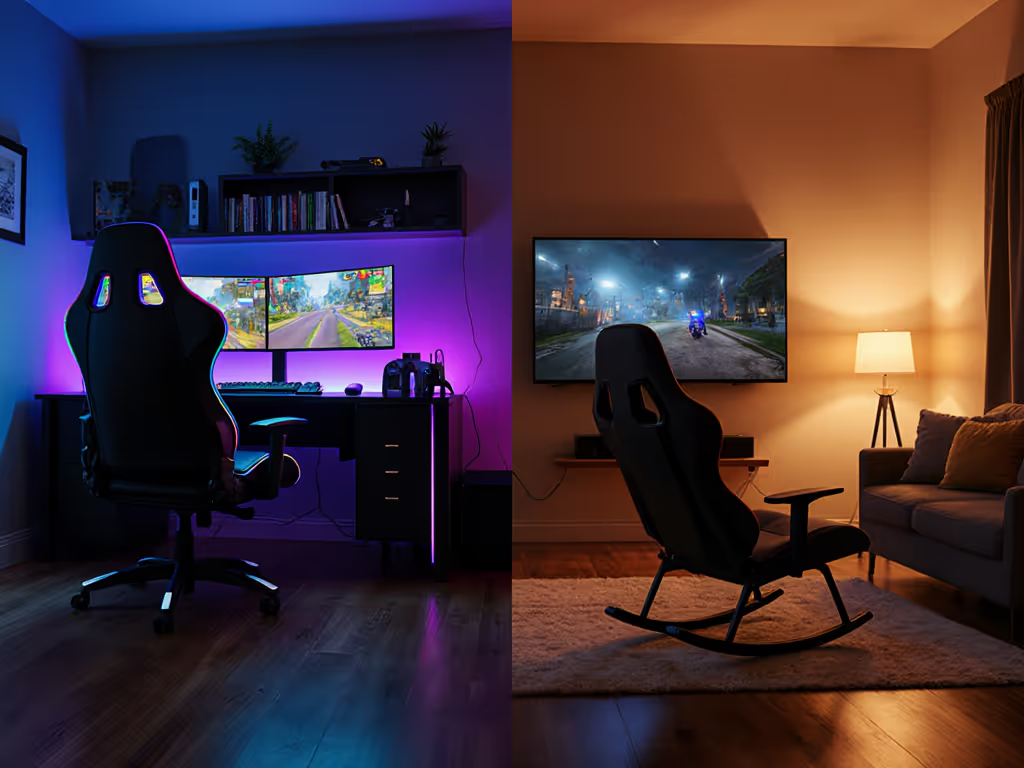
PC Desk or Console Floor: Best Gaming Chair Choice
Choose the right gaming chair by aligning space, playstyle, and body fit. Get practical guidance on footprints, ergonomics, adjustability, and storage to decide between PC desk models and console floor rockers.
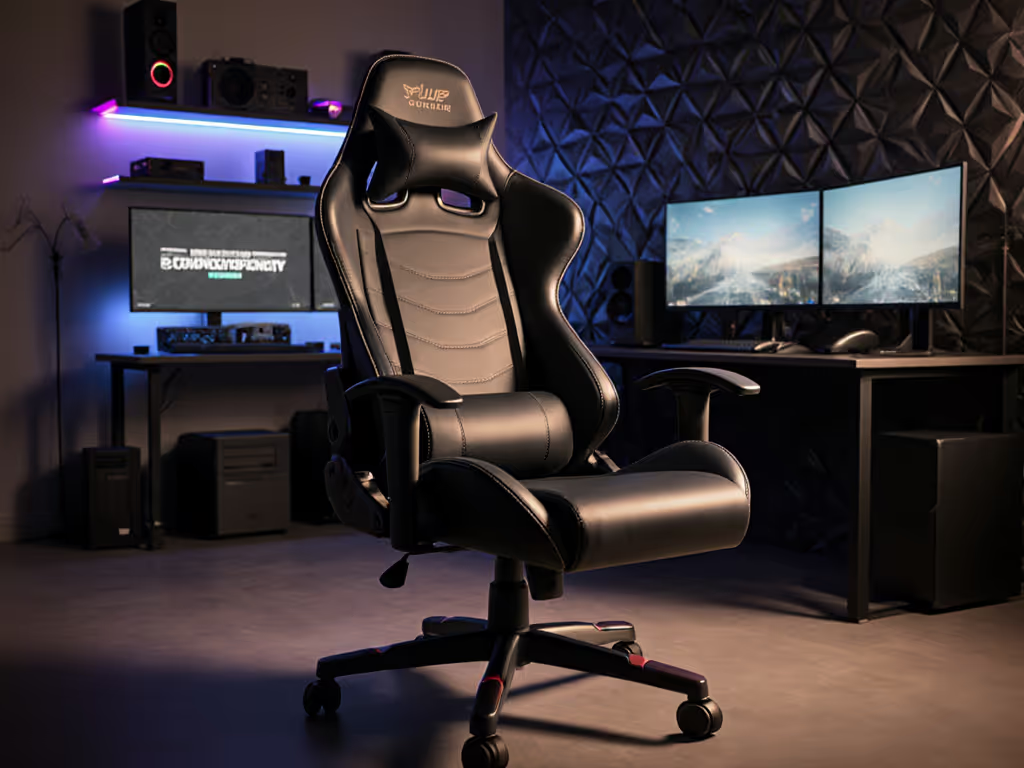
Best Gaming Chair for Big and Tall Gamers: Top 5 Tested
Measure inseam, shoulders, hips, and lumbar height to match your body to seat depth, width, backrest height, and lumbar adjustability. Then choose from five tested chairs with clear fit ranges and trade-offs to reduce pressure points and neck strain.
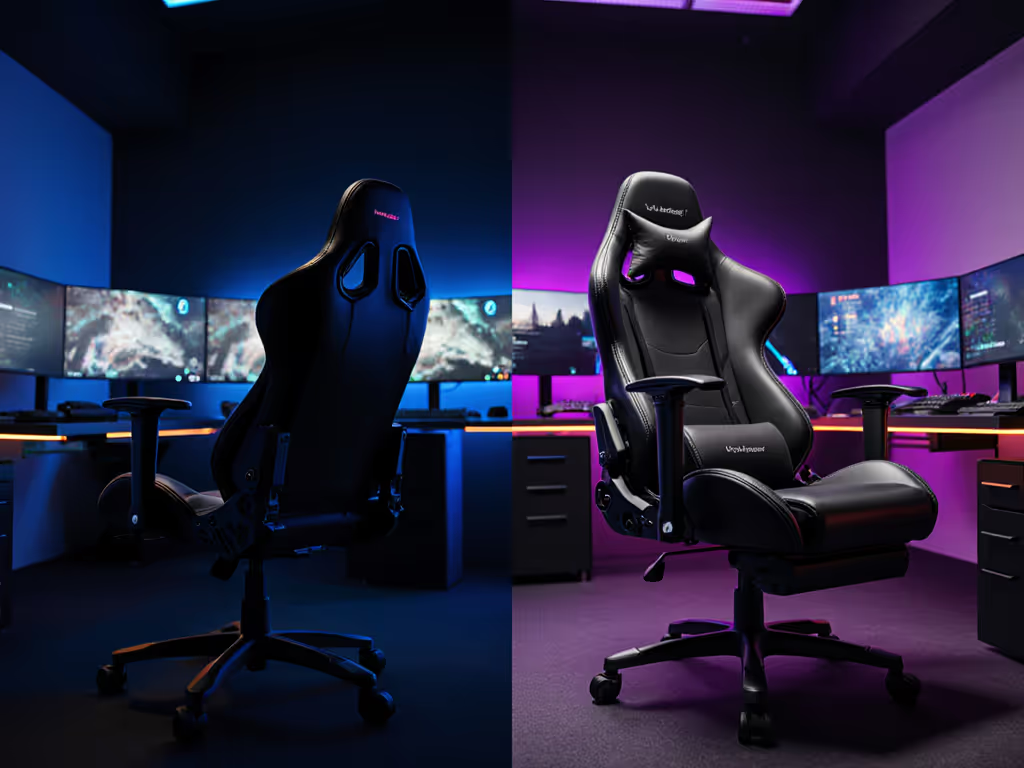
Budget vs Premium Gaming Chairs: Adjustability Worth the Upgrade?
Learn how precision adjustability - not racing aesthetics - drives steadier aim and reduced fatigue, focusing on armrest geometry, seat depth, and tilt control. Use the 10-minute audit and ROI framework to decide if a premium chair fits your desk height, session length, and body type.
